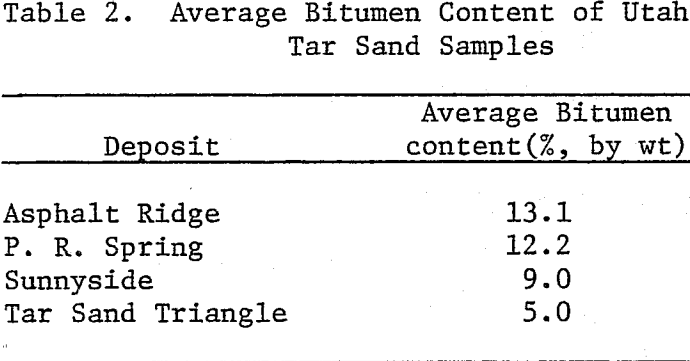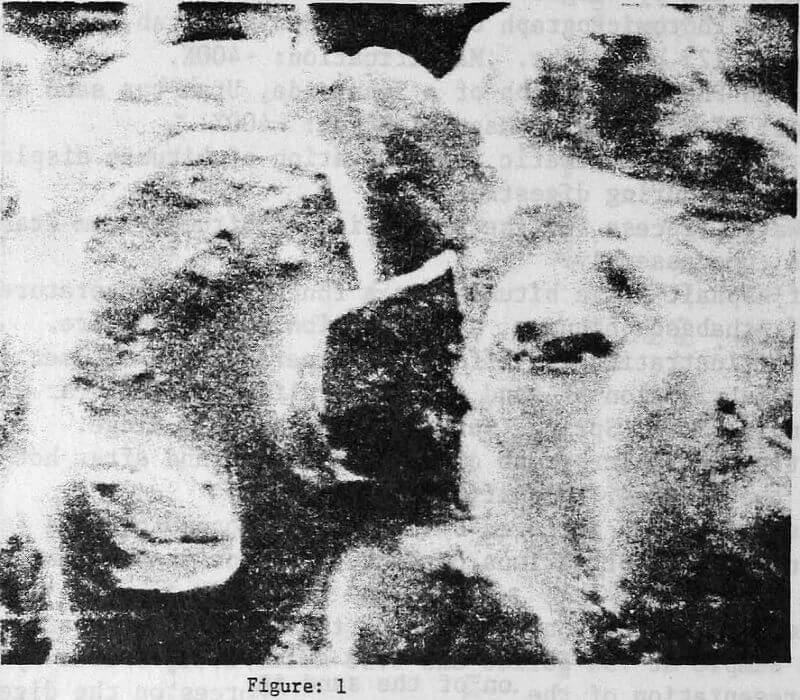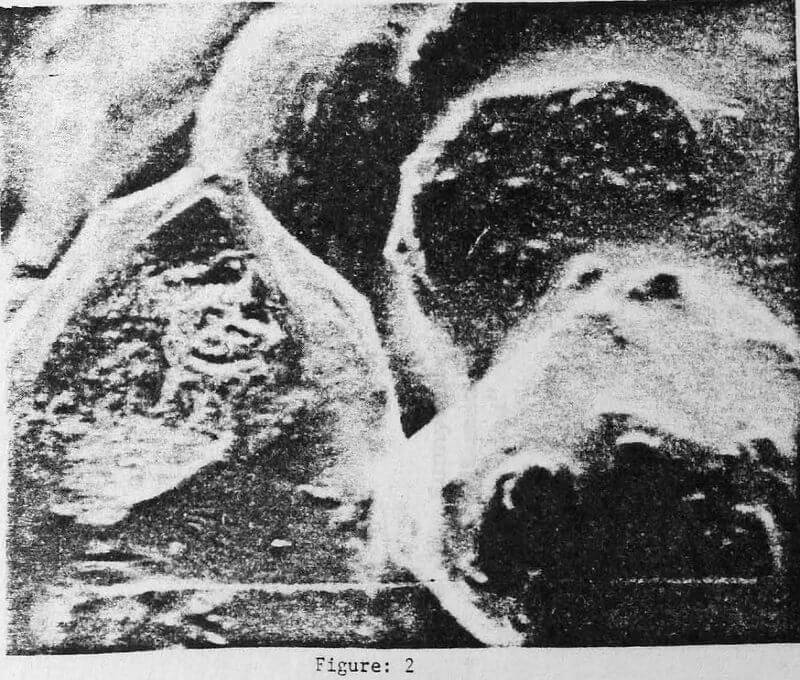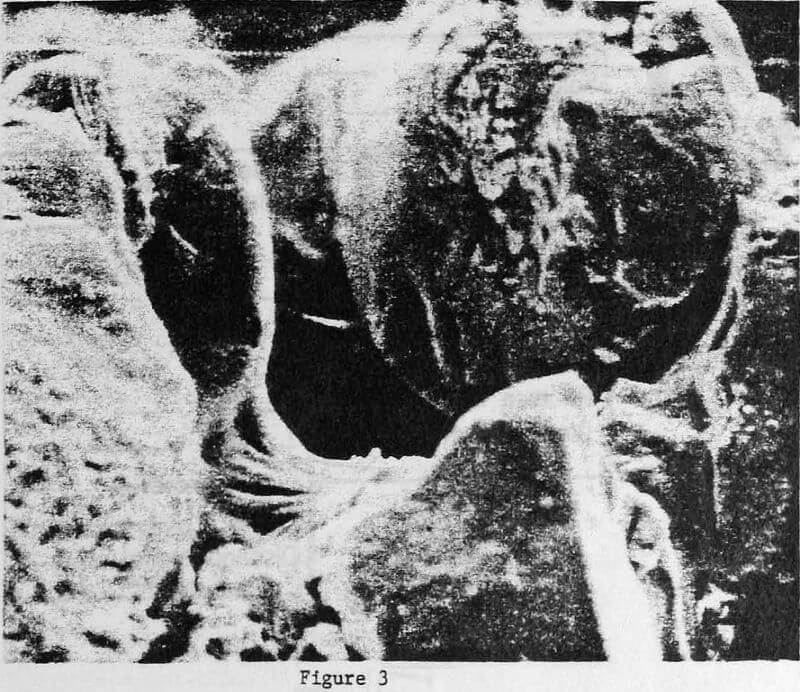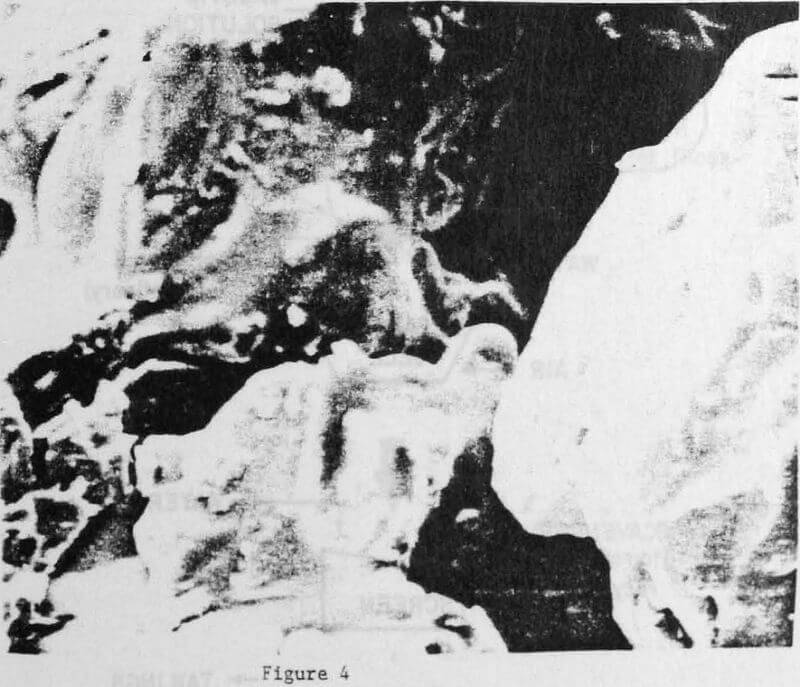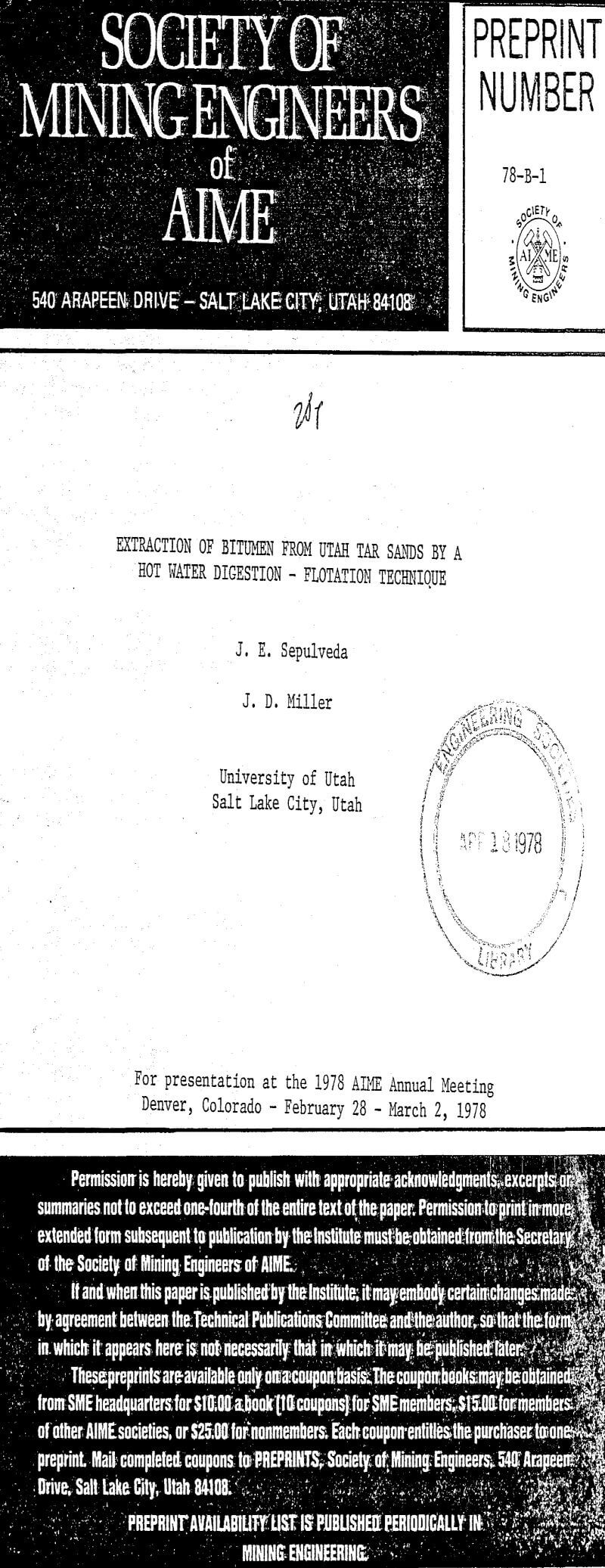Tar sand deposits in the State of Utah contain more than 25 billion barrels of in-place bitumen. Although thirty times smaller than the well-known Athabasca tar sands, Utah tar sands do represent a significant domestic energy resource comparable to the national crude oil reserves (31.3 billion barrels). The term “tar sand” refers to a consolidated mixture of bitumen and sand. Based upon a detailed analysis of the physical and chemical properties of both the bitumen and the sand, a hot-water extraction process for Utah tar sands is currently being developed in our laboratories at the University of Utah. This process involves intense agitation of the tar sand in a hot caustic solution and subsequent separation of the bitumen by a modified froth flotation technique.
Extraction Technology
As in any other extraction problem, there are two basic approaches to the recovery of bitumen from tar sands. In one case, the ore can be mined and transported to a processing plant where the bitumen is recovered. Alternately, the extraction of the bitumen can be accomplished “in-situ.” Over the last 50 years, a great variety of extraction processes, including both surface mining and in-situ processes., have been proposed in the literature. However, until recent years, little was known about the potential applicability of any of these processing strategies to Utah tar sands.
Based on the fact that the Hot-Water Process is the only process whose technology is well developed and is currently being used in the primary extraction of bitumen from Canadian tar sands, the main objective in this investigation was to quantify the performance of a similar process for Utah tar sands. In particular, research efforts were concentrated on the identification of the main operating variables which control the quality of the separation achieved by hot-water extraction.
Although similar in principle, the actual separation mechanisms in the processing of Athabasca and Utah tar sands differ significantly. Because of the high moisture content of Athabasca tar sands, 3% to 5% by weight connate water, it has been postulated by Canadian investigators that the equilibrium structure of Athabasca tar sands consists of sand particles separated from the bitumen by a film of connate water surrounding the sand particles. Accordingly, the bitumen in Athabasca tar sands has already been displaced from the sand by the connate water.
Experimental
Owing to the large number of variables controlling the performance of the hot-water process and the lack of background information on the subject, the effect of each individual variable on the overall performance could not be studied separately, as this would require a very large number of experiments.
The processing strategy used in laboratory hot-water extraction tests is illustrated in Figure 6. The tar sand sample was extruded down to smaller pieces (-3/8″) and fed to a 1-gallon, stirred tank reactor where it was contacted with the hot caustic solution and stirred, at constant temperature, for a specified digestion time. The essential features of this reactor are an impeller with two opposing pitched blade turbines (4″ OD), a torquemeter, an SCR speed controller, a tachometer, a reflux/takeoff condenser and a temperature control/heating system. The amount of tar sand and solution added to the digestor in each extraction test were calculated so that the active volume of the reactor was the same in all of the experiments. At the end of the digestion stage, the bitumen had been displaced from the surface of the sand particles and could be separated from the dispersed sand in a conventional bench-scale flotation machine where the bitumen was floated with air at moderate stirring speed. No frothers or collectors were added to the flotation cell.
Samples of feed, concentrate, and tailings obtained during experimentation were analyzed to determine their composition with respect to bitumen, sand and water. For this purpose, a set of six Dean and Stark tube assemblies were set up in accordance to the procedure reported by the U.S. Bureau of Mines.
Results and Discussion
Preliminary extraction tests indicated that, under similar operating conditions, the performance of the hot-water process was strongly dependent upon the nature of the tar sand sample. In order to quantify this dependence, tar sand samples were characterized in terms of their composition, bitumen viscosity and particle size distribution of the sand.
The viscosity of the bitumen in tar sands is of primary importance in the design of in-situ mining, recovery, upgrading and material handling processes. For comparison purposes, samples of pure Athabasca and Asphalt Ridge bitumen were prepared by dissolving the tar sand in an excess of benzene, settling out the solids and finally, evaporating all of the benzene on a hot plate for an extended period of time (10-15 hours).
The flow properties of a fluid are well described by the relationship between the shear stress applied to a fluid element and the rate at which the element is deformed as a result of the applied stress. A Newtonian fluid is such that its viscosity, defined as the slope of the flow curve at every point, is independent of the shear rate; or equivalently, the flow curve is a straight line.
The excellence of the separation can be quantified not only by the grades of the products and the recovery of the different components but also by the coefficient of separation (CS), which is defined as the fraction of the feed material which undergoes a perfect separation, while the rest of the feed is distributed unchanged into the respective product streams.
To summarize this experimental approach of the six continuous digestion variables, only three variables are left for consideration; namely, the percent solids in the reactor, the concentration of caustic in solution and the intensity of agitation. In this regard, the term percent solids refers to the amount of tar sand (both bitumen and sand) with respect to the total mass of material in the system. The experimental design and optimization process were based on these three variables. The optimization objective was to maximize the coefficient of separation.
Perhaps the most critical variable is the wetting agent concentration. A low caustic addition (below 0.4M) results in an acid, sticky bitumen concentrate and a tail which still contains a significant amount of bitumen. On the other hand, an excessively high caustic addition (above 124) neutralizes the hydrophobic nature of the bitumen and therefore it cannot be recovered by flotation. The inferior response at low and high caustic additions may be related to the pH of the digested pulp, whose critical role in bitumen displacement has been recognized previously.
All of the experiments reported above were performed at 95° C. In order to test the hypothesis that the quality of the separation should deteriorate at lower temperatures because of the increase in bitumen viscosity, a series of experiments with Asphalt Ridge tar sand were performed at lower temperatures, setting all other variables at the optimum conditions previously determined.
Particle size analyses of the feed and products after hot-water processing reveals that size classification of the sand particles occurs during the processing sequence. Most of the fine particles are recovered in the bitumen concentrate whereas course particles are rejected to the tailings.

